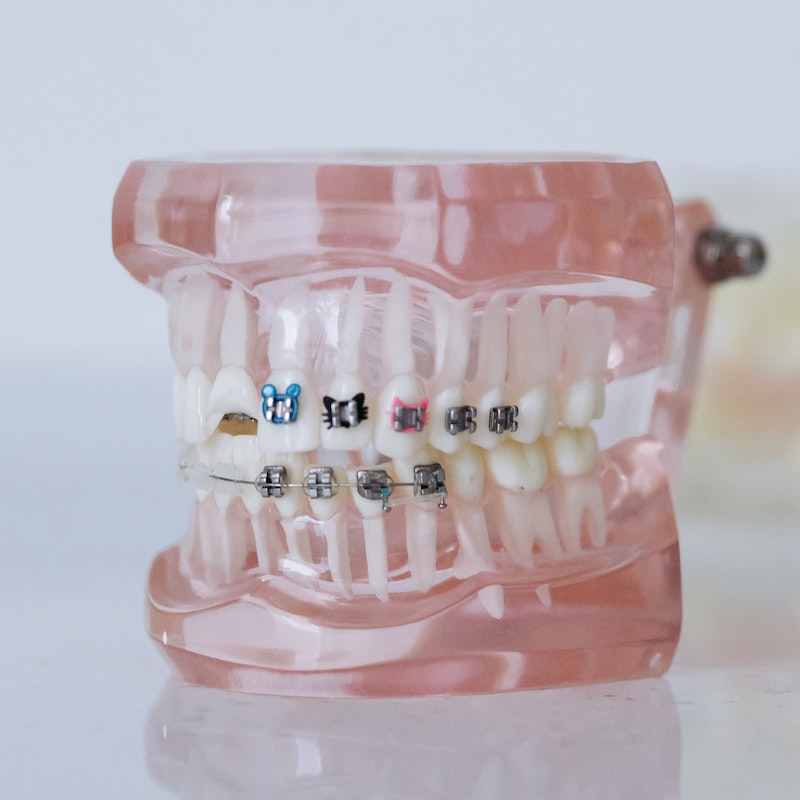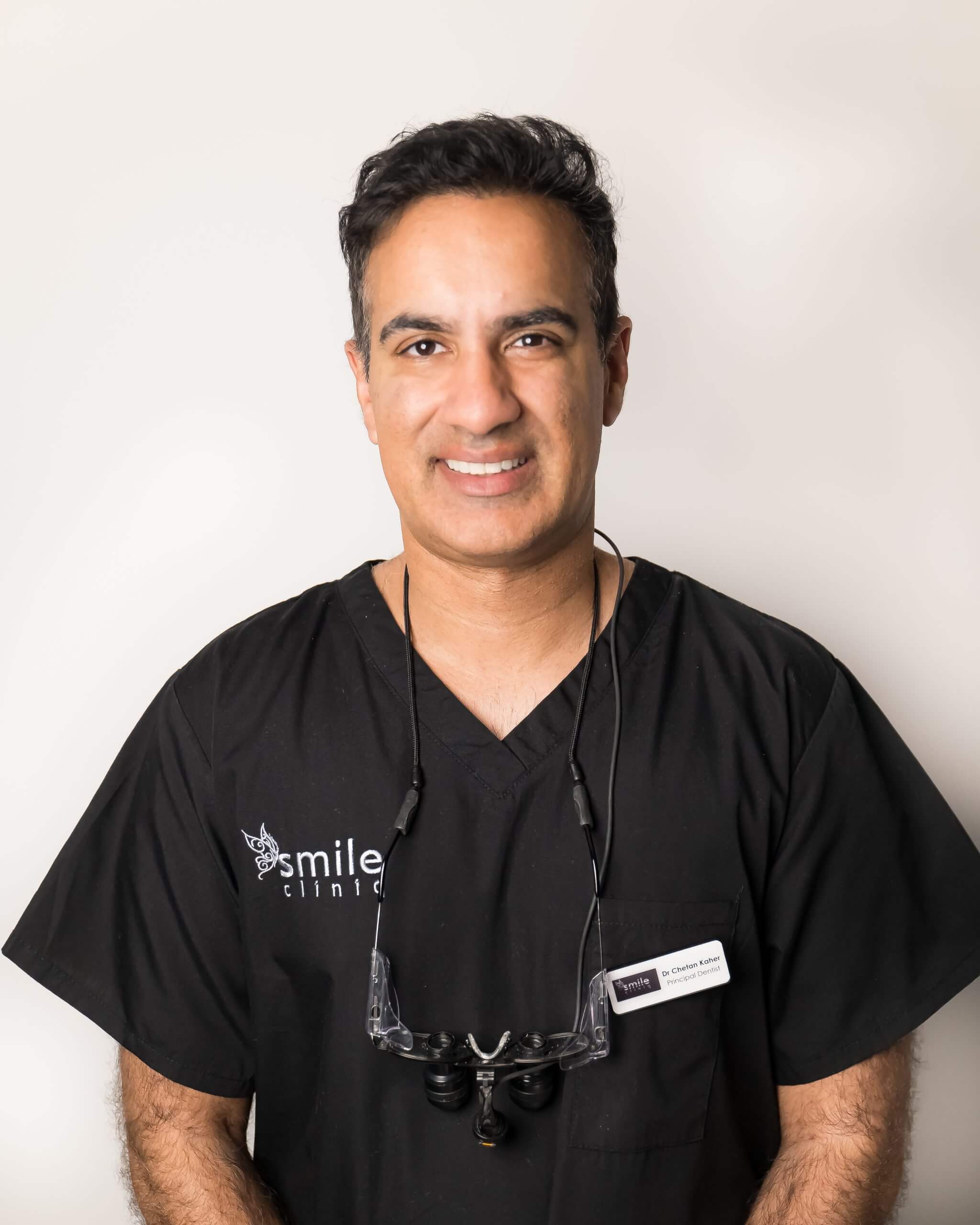Aug
22

Good dental hygiene is essential for everyone, but it becomes especially crucial when you have braces: this is because the plethora of wires, bands, and brackets can make maintaining impeccable oral health a daunting task.
At our dental clinic, some of our most frequently asked questions are about flossing with braces: how do you do it correctly? Do you brush or floss first? And how can you get your oral care routine done swiftly and safely, while still being effective? In the following blog, we’re going to break down the process from start to finish, so let’s take a look!
Can you floss with braces?
Yes! In fact, flossing is even more vital when you have braces. Braces create numerous nooks and crannies where food particles can get trapped, and if not removed, these particles can lead to plaque buildup, which can in turn result in potential dental issues such as fillings (cavities) or gum disease.
However, flossing with braces requires a different technique than flossing without them. Traditional flossing methods won’t be as effective because the wire prevents the floss from moving freely between the teeth. Instead, orthodontic flossers or floss threaders are often recommended; these tools can help you get the floss under the wire and between the teeth.
How often should you floss with braces?
With braces, our recommendation doesn’t change from the general guideline: you should floss at least once daily. However, if possible, consider flossing after every meal. As mentioned earlier, braces can trap food particles quite easily, and frequent flossing helps ensure that these particles do not remain lodged between your teeth for long.
Though it might seem like an arduous task – given the complexity introduced by braces – frequent flossing will help keep your teeth and gums healthy during your orthodontic journey. Remember, while braces are temporary, the health implications from neglecting dental hygiene can be long-lasting. At our London dental clinic, we always encourage our patients to commit to their oral routine in the same way they commit to their grooming routine; it’s just as – if not even moreso – important.
Why is it so hard to floss with braces?
The challenge with flossing while wearing braces predominantly stems from the physical barriers created by the braces themselves: traditional dental floss is designed to slide between teeth and under the gumline easily, while with braces, you have an orthodontic wire running across your teeth, which acts as an impediment to the standard flossing motion. You should also consider the following factors:
Bracket Design
Brackets are bonded to the surface of each tooth and create a physical barrier. They can hinder access, making it difficult to manoeuvre floss effectively.
Find out about the benefits of Incognito Braces.
Tight Spaces
Braces often cause teeth to shift, sometimes leading to tighter spaces between certain teeth. This can make it challenging to insert floss without causing discomfort or potential damage to the braces or gums.
Increased Risk of Snagging
With more components in the mouth, there’s a higher risk of the floss snagging on something, which can be frustrating.
This complexity often results in longer flossing times and can be discouraging for many, especially if they’re new to the world of braces. The good news is that with the right tools and techniques, these challenges can be managed effectively.
Do you floss or brush first with braces?
The general consensus in the dental world is that flossing your teeth before brushing them is the most effective way to reap the most benefits out of each process – and it’s the same for those with braces! Here’s why: when you floss before or after brushing, you’re dislodging and removing trapped food particles and plaque from between your teeth and around the brackets.
Here’s why: when you floss before brushing, you’re dislodging and removing trapped food particles and plaque from between your teeth and around the brackets. After flossing, brushing can then sweep away these loosened particles more efficiently; this method ensures that fluoride from toothpaste can reach between the teeth more effectively, providing added protection against decay.
Furthermore, brushing first could push more debris between the teeth, making the flossing process more challenging. By flossing first, you’re giving your teeth a preliminary clean, allowing brushing to be more effective in its role.
What happens if you don’t floss with braces?
Neglecting to floss while wearing braces can have significant repercussions on your oral health:
Plaque Buildup
As we’ve highlighted above, braces create numerous hiding spots for food particles. This means that if these aren’t removed, they can lead to plaque accumulation, and over time, this plaque can harden into tartar, which can only be removed by a dental professional.
Gum Disease
Neglecting to floss when you have braces can also result in gingivitis, the early stage of gum disease; this is caused by prolonged plaque accumulation. If left unchecked, gingivitis can progress to a more severe form of gum disease called periodontitis, which can lead to potential tooth loss.
Fillings
The longer food particles and plaque remain in contact with your teeth, the higher the risk of developing fillings in your teeth. As braces already make some areas of the teeth harder to clean, neglecting flossing exacerbates this vulnerability.
Stains
Easiest way to ruin your shiny-white smile? Not flossing! Failure to floss your teeth can lead to noticeable staining around brackets, which might become evident once the braces are removed. This can result in a patchy appearance, with lighter spots where the brackets were and darker areas surrounding them.
How can I floss faster with braces?
While flossing with braces does inherently take a bit more time, there are methods to speed up the process:
Floss Threaders
These handy tools make it easier to get dental floss beneath the wire and between the teeth, saving time and frustration.
Orthodontic Flossers
Designed specifically for people with braces, these are pre-threaded flossers that can be manoeuvred more easily than regular floss.
Water Flossers
A water flosser, or oral irrigator, uses a pressurised stream of water to clean between teeth and around braces. Many people find this method quicker and more comfortable than traditional flossing, though it’s best used in conjunction with regular floss for optimal results. Additionally, after your braces are removed, you may want to learn how to clean your retainers effectively.
The Bottom Line
Ultimately, having braces doesn’t just transform your smile; it also introduces new responsibilities in oral care. Commit to your dental hygiene routine, and the results – a radiant, braces-free smile – will be well worth the effort. Remember, once the braces come off, understanding the importance of wearing an orthodontic retainer will help maintain your newly straightened teeth.











